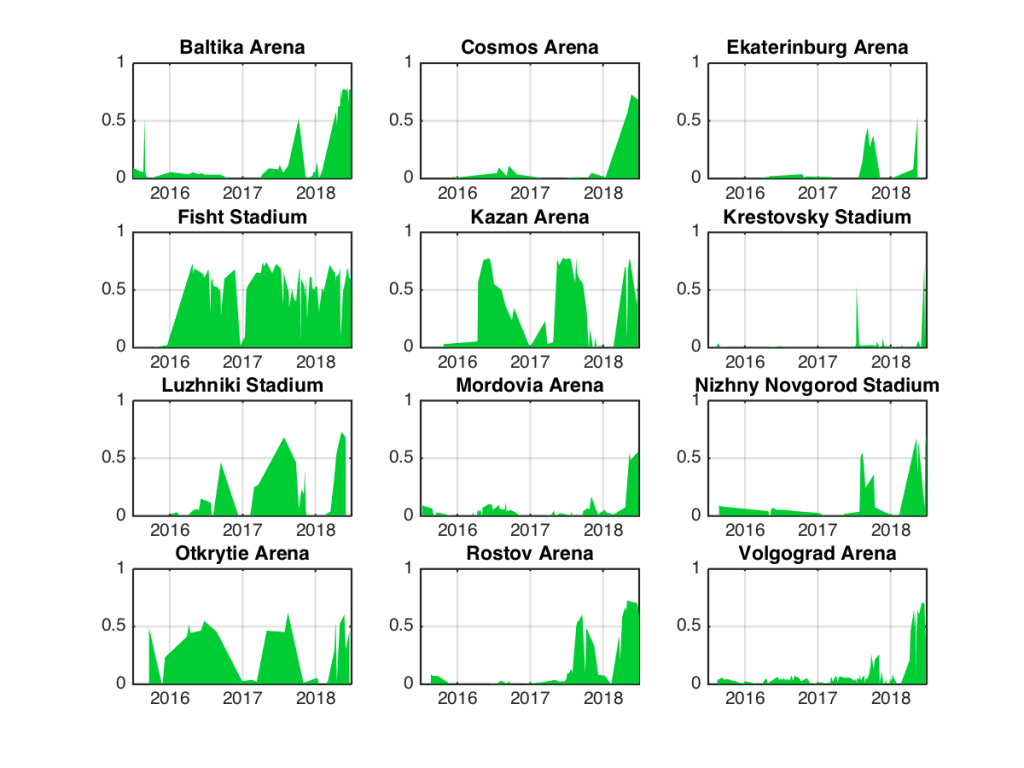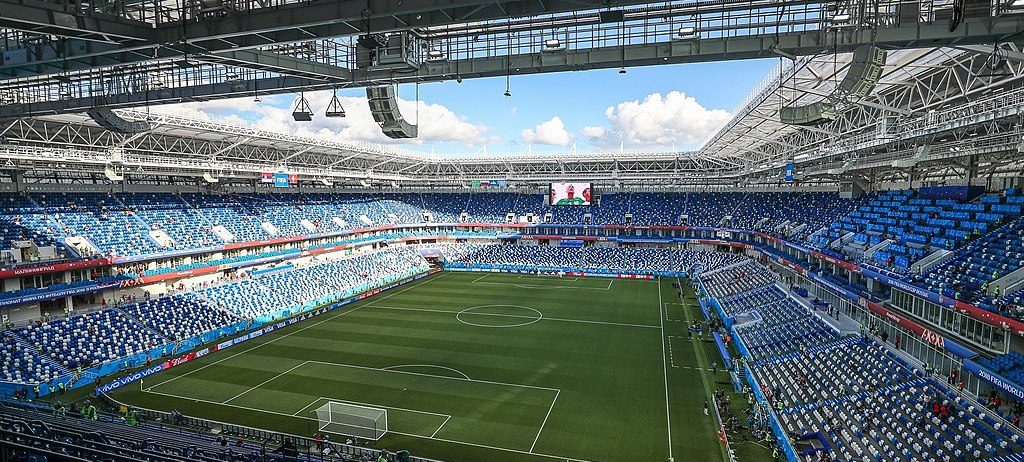NDVI time series in 2018 World Cup stadiums
The figure below shows the evolution of the Normalized Difference Vegetation Index (NDVI) in the pitches of all the 2018 World Cup stadiums.

I retrieved these data from Sentinel-2 observations using the new time series plotter in the EO Browser. I just drew a polygon in each of the 12 stadiums to get the average NDVI values on every available cloud-free date.


Because the NDVI is a proxy of the vegetation health (here the grass on the pitch), these charts allow us to identify which stadiums were built for the 2018 World Cup (Volgograd Arena, Cosmos Arena). On the other hand, the Fisht stadium in Sotchi looks well maintained since 2016. It « served as the venue for the opening and closing ceremonies of the 2014 Winter Olympics (…) was originally built as an enclosed facility; it was re-opened in 2016 » (wikipedia). Also it should be noted that the Krestovsky Stadium in Saint Petersburg is a retractable roof stadium. « As of May 2017, the stadium was 518% late and 548% over budget (…) At a cost of $1.1 billion at current exchange rates, it is considered one of the most expensive stadiums ever built. » (wikipedia).
Hopefully the grass will remain green in the next months, unlike some stadiums in Brazil after the Olympics. In the meantime, as you can see by yourself, the grass is blue in the Kazan Arena!









